With so many types of tents for camping to consider, how do you know which tent to choose? In this post, we’ll go over the 10 most common types of camping tents so that you’ll know which one is best for you.
Here are the types of tents we’ll discuss:
- A-frame Tents
- Backpacking Tents
- Bivy Tents
- Cabin Tents
- Dome Tents
- Geodesic Tents
- Hammock Tents
- Instant Tents
- Inflatable Tents
- Tunnel Tents
A-Frame Tents – Also Known as Ridge Tents
A-frame or ridge tents: Steeped in history, these tents boast a traditional triangular shape reminiscent of the classic camping experience. Featuring a single ridgepole that runs down the center, A-frame tents are supported by vertical poles at each end. The resulting shape provides a sturdy and reliable shelter in various weather conditions.
One of the key advantages of A-frame tents is their simplicity. They are generally easy to set up, requiring minimal time and effort, making them an excellent choice for novice campers or those who prioritize hassle-free assembly. Additionally, their straightforward design often results in a lighter weight, making them suitable for short hiking trips or car camping.
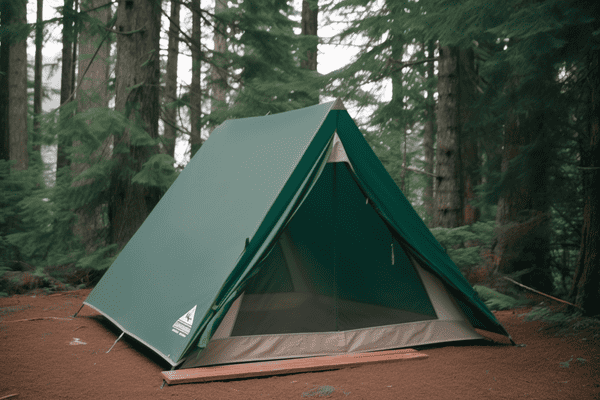
However, A-frame tents do have some limitations. Due to their sloping walls, they may lack headroom and living space, especially for taller campers. This can make them less comfortable for extended stays or for accommodating multiple occupants. Similarly, the limited space may restrict storage options, with some A-frame tents lacking vestibules or additional pockets for gear organization.
Despite these drawbacks, A-frame tents remain a popular choice among campers who value ease of setup and a classic design. They are especially suitable for short camping trips or situations where extra headroom and storage are not critical factors. To maximize comfort, campers can opt for larger A-frame models or choose tents with additional features like mesh windows for ventilation and built-in gear lofts for storage.
Here is a quick table showing the advantages and disadvantages of A-frame tents:
| Advantages | Disadvantages |
|---|---|
| Simple design | Limited headroom and living space |
| Easy to set up | Reduced storage options |
| Lightweight (depending on the model) | Not ideal for extended stays |
| Sturdy and reliable shelter | Less comfortable for taller campers |
| Suitable for novice campers | May require guylines for stability |
| Classic, nostalgic camping experience | Less versatile compared to modern tents |
| Ideal for short trips or car camping | Narrower range of features |
Backpacking Tents
Backpacking tents are a crucial piece of gear for outdoor enthusiasts who enjoy exploring nature on multi-day hiking or trekking adventures. These tents are specially designed to cater to the unique needs of backpackers, focusing on providing a comfortable and secure shelter without adding unnecessary weight to their load. As backpackers often carry all their gear on their backs, it’s essential to strike a delicate balance between durability, protection, and lightweight construction when choosing the perfect backpacking tent.
One of the key aspects of backpacking tents is their lightweight materials and construction. Manufacturers use innovative materials such as ultra-light ripstop nylon or polyester fabrics, which are both durable and water-resistant. Tent poles are usually made from lightweight yet sturdy materials like aluminum or carbon fiber. These materials help to ensure that the overall weight of the tent remains minimal, enabling backpackers to cover greater distances with ease. Additionally, many backpacking tents feature single-wall designs or hybrid double-wall constructions, which help to reduce weight without compromising on weather protection.
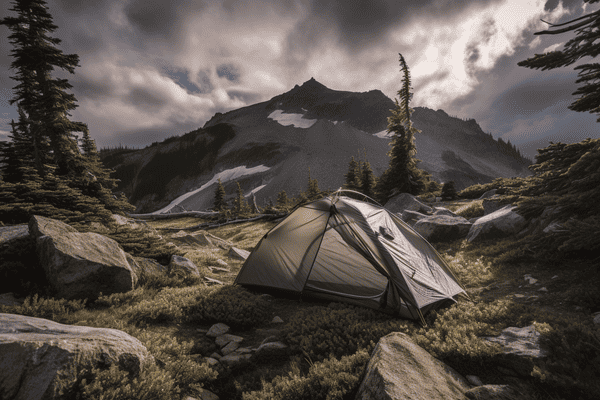
Despite their minimalist design, backpacking tents still offer essential features to ensure a comfortable camping experience. Ventilation is crucial to avoid condensation buildup and to maintain a pleasant sleeping environment. Backpacking tents typically incorporate mesh panels, vents, or breathable fabrics to promote airflow, while still providing protection from insects and other critters. Furthermore, these tents often come with rainflys or vestibules, offering additional storage space for gear and protection against inclement weather. While backpacking tents prioritize a compact footprint, they also provide adequate sleeping and storage space for solo campers or small groups.
When choosing the right backpacking tent, it’s important to consider factors such as the number of occupants, anticipated weather conditions, and personal preferences for weight and pack size. Seasonal ratings, such as three-season or four-season tents, also play a role in selecting the most suitable option for your adventures. Three-season tents are typically lighter and offer more ventilation, making them ideal for spring, summer, and fall, while four-season tents are more robust and insulated, designed to withstand harsh winter conditions.
Here is a quick table showing the advantages and disadvantages of backpacking tents:
| Advantages | Disadvantages |
|---|---|
| Lightweight construction | Limited interior space and headroom |
| Compact and easy to pack | May sacrifice comfort for weight savings |
| Designed for long hikes and treks | Less durable than heavier tents |
| Quick and easy to set up | Not ideal for extreme weather conditions |
| Offers weather protection | May be less versatile than other tents |
| Ventilation and breathability | Could be more expensive |
| Suitable for solo or small group camping | Limited storage options for gear |
| Available in various seasonal ratings | May require more maintenance |
Bivy Tents
Bivy tents, short for “bivouac tents,” are minimalist shelters designed with the solo camper in mind. Their primary purpose is to provide a protective shell around a sleeping bag, ensuring a safe and comfortable night’s sleep in the great outdoors. Ideal for ultralight backpackers, mountaineers, or those on fast-and-light missions, bivy tents offer a compact and lightweight alternative to traditional tents. With their streamlined design, bivy tents enable adventurers to set up camp quickly and efficiently, without sacrificing essential protection from the elements.
One of the most significant advantages of bivy tents is their lightweight and compact nature. Crafted from lightweight materials, such as silicone-coated nylon or breathable yet water-resistant fabrics, these shelters minimize the load on the camper. Their small size and lack of complex pole structures make them easy to pack and carry, making them particularly well-suited for backpackers who need to maximize their gear’s efficiency. Additionally, bivy tents are quick and simple to set up, often requiring only a few stakes or guylines, allowing bivy campers to focus on other aspects of their outdoor adventure.
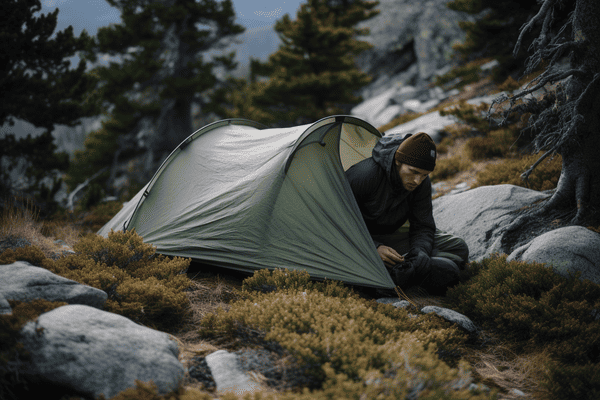
While bivy tents prioritize a minimalist design, they still offer essential features to ensure a comfortable and safe camping experience. They provide protection against the elements, including wind, rain, and snow, thanks to their water-resistant and windproof materials. Furthermore, many bivy tents incorporate mesh panels or vents to promote airflow, reducing condensation buildup and ensuring a more pleasant sleeping environment. To keep insects at bay, some bivy tents also feature bug-proof mesh netting, allowing campers to enjoy a peaceful night’s sleep without unwelcome visitors.
Despite their numerous advantages, bivy tents may not be suitable for all campers or situations. Their minimalist design offers limited space, making them ideal for solo campers but not for those traveling with companions or seeking more room for gear storage. Additionally, bivy tents may feel claustrophobic for some individuals due to their snug fit and low-profile design. Finally, while bivy tents provide protection from the elements, they may not be the best choice for extreme weather conditions or extended stays in harsh environments. In these situations, more robust and spacious tents may be a more suitable option. Nonetheless, for solo adventurers seeking a lightweight and efficient shelter, bivy tents remain a popular and practical choice.
Here is a quick table showing the advantages and disadvantages of bivy tents:
| Advantages | Disadvantages |
|---|---|
| Lightweight and compact | Limited space and headroom |
| Quick and easy to set up | May feel claustrophobic |
| Minimalist design | Not suitable for multiple occupants |
| Suitable for solo campers | Limited gear storage |
| Efficient for fast-and-light adventures | Not ideal for extended stays |
| Protection from the elements | Less comfortable than larger tents |
| Ventilation and bug protection | May not be suitable for extreme weather |
| Ideal for ultralight backpackers | Less versatile than other tent options |
Cabin Tents
Cabin tents are a popular choice among campers seeking ample headroom and living space in their outdoor shelter. With their vertical walls and boxy shape, cabin tents provide a more home-like feel, making them ideal for family camping trips, extended stays, or those who simply prefer a more spacious and comfortable shelter. As their name suggests, cabin tents resemble small cabins, offering occupants a sense of stability and security while enjoying nature’s beauty.
One of the key advantages of cabin tents is their generous living space. The vertical walls maximize the usable area, allowing campers to stand, walk, and move around with ease. This feature is particularly beneficial for families with children or larger groups, providing ample room for sleeping, relaxing, and socializing. Additionally, cabin tents often come with multiple rooms or dividers, offering a sense of privacy and separation when needed. Many cabin tents also feature windows with mesh screens and adjustable panels, providing both ventilation and the opportunity to enjoy the surrounding scenery.
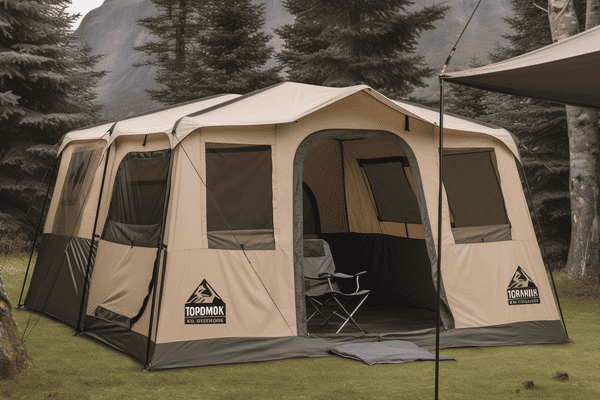
Despite their numerous benefits, cabin tents do have some drawbacks to consider. One of the main challenges is their setup process, which can be more complicated and time-consuming compared to smaller or simpler tent designs. Cabin tents often require multiple poles and guylines, as well as a greater degree of coordination and teamwork to erect. Another downside is their weight and bulkiness. Due to their size and construction materials, cabin tents are typically heavier and more difficult to transport than other tent types, making them less suitable for backpacking or situations where gear weight and portability are crucial.
To sum things up, cabin tents are an excellent option for campers who prioritize space, comfort, and a home-like feel in their outdoor shelter. They are particularly well-suited for family camping trips, group outings, or extended stays in the wilderness. However, their setup process and weight may not be ideal for every situation or camper.
Here is a quick table showing the advantages and disadvantages of cabin tents:
| Advantages | Disadvantages |
|---|---|
| Ample headroom and living space | More challenging to set up |
| Vertical walls for maximum usable area | Heavier and bulkier |
| Ideal for family camping trips | Less suitable for backpacking |
| Multiple rooms or dividers | Longer setup time |
| Windows for ventilation and views | May require teamwork for setup |
| Home-like feel and comfort | Less wind-resistant than other tents |
| Suitable for longer stays | Not as portable as other tent options |
| Can accommodate larger groups | May require more maintenance |
Dome Tents
Dome tents are a popular and versatile option for campers of all experience levels. Known for their simple two-pole structure that forms a dome shape, these tents provide a balance of headroom, stability, and ease of setup. The curved design of dome tents allows for a more efficient use of space, making them suitable for a wide range of outdoor activities, from car camping to backpacking adventures. Their adaptability and user-friendly nature have made dome tents a favorite among outdoor enthusiasts.
One of the key advantages of dome tents is their stability. The crossed-pole structure creates a strong and sturdy shelter that can withstand various weather conditions, including rain, wind, and even light snow. The rounded shape of the tent also allows for better wind resistance, as it prevents strong gusts from catching on flat surfaces. Additionally, the dome design offers good headroom, allowing occupants to comfortably sit up, change clothes, or perform other tasks inside the tent without feeling cramped.
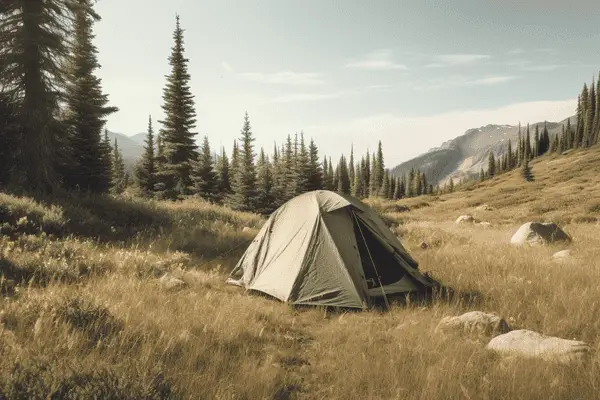
Dome tents are also known for their ease of setup. With a straightforward pole structure, even novice campers can quickly and efficiently pitch these tents with minimal hassle. This simplicity allows campers to spend more time enjoying their surroundings and less time wrestling with complicated tent components. Furthermore, many dome tents come with vestibules or attached storage spaces, providing extra room for gear, shoes, or wet clothing. This added storage can be particularly helpful in keeping the interior of the tent clean and clutter-free.
Despite their numerous advantages, dome tents do have some limitations. While they offer good headroom near the center of the tent, the sloping walls may reduce usable space towards the edges. This can make them feel more confined compared to cabin tents or other designs with vertical walls. Additionally, while dome tents are stable in moderate weather conditions, they may not be the best choice for extreme environments or high-altitude mountaineering, where more specialized tent designs are required. However, for the majority of campers seeking a versatile, easy-to-set-up, and stable shelter, dome tents remain a reliable and popular choice.
Here is a quick table showing the advantages and disadvantages of dome tents:
| Advantages | Disadvantages |
|---|---|
| Good headroom and stability | Reduced usable space near edges |
| Easy to set up | May not be suitable for extreme environments |
| Versatile for various outdoor activities | Less spacious than cabin tents |
| Simple two-pole structure | Not ideal for high-altitude mountaineering |
| Vestibules for added storage | Sloping walls may feel confining |
| Suitable for car camping and backpacking | May require guylines for added stability |
| Wind-resistant design | Limited privacy with single-room designs |
| User-friendly for novice campers | May not provide as much comfort as other tents |
Geodesic Dome Tents
Geodesic and semi-geodesic tents are designed for campers who require a shelter capable of withstanding extreme weather conditions and challenging environments. These tents feature complex pole structures that form a series of interconnected triangles, resulting in a highly stable and robust shelter. Geodesic tents are a popular choice among mountaineers, alpine climbers, and adventurers who need a reliable and sturdy tent for their expeditions. The distinctive design of these tents not only provides enhanced stability but also adds a level of sophistication to their appearance.
One of the primary advantages of geodesic and semi-geodesic tents is their exceptional stability in harsh conditions. The interlocking triangular pole structure distributes stress and tension evenly across the tent’s surface, enabling it to resist strong winds, heavy snow loads, and other extreme weather elements. This stability makes these tents an ideal choice for high-altitude mountaineering, where campers face unpredictable and potentially dangerous weather conditions. The self-supporting structure of geodesic tents also allows them to be pitched on various terrains, from rocky surfaces to snow-covered slopes.
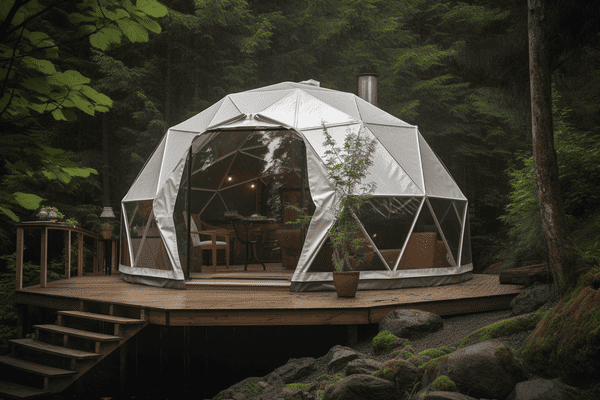
While geodesic and semi-geodesic tents are designed for challenging environments, they still offer a range of features to ensure a comfortable and practical camping experience. Many of these tents come with vestibules for added storage, multiple vents for improved airflow, and durable, weather-resistant materials to protect occupants from the elements. The internal space in geodesic tents can be quite generous, providing ample room for occupants and their gear. However, the complexity of the pole structure may make setup slightly more time-consuming compared to simpler tent designs.
Despite their numerous benefits, geodesic and semi-geodesic tents do have some drawbacks. Their complex pole structure can make them heavier and bulkier than other tent types, which may be a concern for campers who need to carry their gear over long distances. Furthermore, the enhanced stability and durability of these tents often come at a higher price, making them a more significant investment than other, more basic shelter options. Nevertheless, for adventurers who require a dependable shelter in extreme environments or challenging conditions, geodesic and semi-geodesic tents remain an unmatched and reliable choice.
Here is a quick table showing the advantages and disadvantages of dome tents:
| Advantages | Disadvantages |
|---|---|
| Enhanced stability in extreme conditions | Heavier and bulkier than other tents |
| Ideal for mountaineering | More expensive |
| Can withstand strong winds and snow | More complex setup process |
| Self-supporting structure | May not be necessary for casual camping |
| Ample internal space | Can be overkill for mild conditions |
Hammock Tents
Hammock tents offer a unique and comfortable alternative to traditional ground-based tents for campers seeking a different outdoor sleeping experience. Suspended above the ground, hammock tents provide a feeling of weightlessness and freedom that many find appealing. These tents are especially popular among backpackers and minimalist campers, as they provide a compact and lightweight shelter solution that is both versatile and functional. With the added benefits of built-in bug nets and rainflys, hammock tents have gained a loyal following among outdoor enthusiasts.
One of the main advantages of hammock tents is the comfort they provide. Many hammock campers find that sleeping in a hammock is more comfortable than lying on the ground, as it reduces pressure points and allows for a more natural sleeping position. This elevated sleeping surface also keeps occupants off the damp, cold ground, providing added insulation and warmth. Furthermore, hammock tents can be pitched on uneven or rocky terrain, as long as there are suitable trees or anchor points available, making them a versatile option for a variety of camping locations.
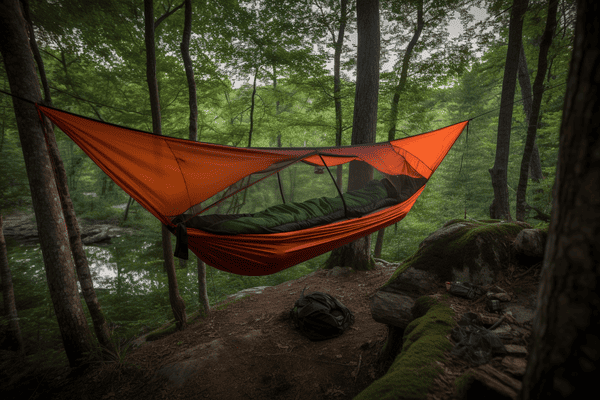
Hammock tents also come with several practical features designed to enhance the outdoor experience. Built-in bug nets help keep mosquitoes and other insects at bay, while rainflys provide protection from the elements. Many hammock tents also have storage pockets and gear lofts to keep essential items organized and within easy reach. Additionally, the compact and lightweight nature of hammock tents makes them an ideal choice for backpackers, as they take up minimal space in a pack and are relatively easy to set up and take down.
Despite their numerous benefits, hammock tents do have some limitations. The most significant drawback is their reliance on trees or other anchor points for setup, which may not be available in all camping locations. Campers must also consider the potential impact on the trees used for suspension and ensure that they are using tree-friendly straps to minimize damage. Additionally, hammock tents may not be suitable for all users, as some individuals may have difficulty finding a comfortable sleeping position or may feel confined within the hammock. However, for those who enjoy the unique sensation of floating above the ground and the convenience of a compact, lightweight shelter, hammock tents can provide a truly memorable camping experience.
Here is a quick table showing the advantages and disadvantages of hammock tents:
| Advantages | Disadvantages |
|---|---|
| Unique and comfortable sleeping experience | Reliance on trees or anchor points |
| Elevated sleeping surface | May not be suitable for all users |
| Insulation from cold, damp ground | Potential impact on trees |
| Suitable for uneven or rocky terrain | Limited space for gear storage |
| Compact and lightweight | Not ideal for multiple occupants |
| Built-in bug nets and rainflys | Can be difficult to find a comfortable sleeping position |
| Easy setup and take down | May feel confined or restrictive |
| Minimal impact on camping area | Not suitable for all camping locations |
Instant Tents – Also Known as Pop-up Tents
Instant or pop-up tents offer a convenient and hassle-free shelter solution for campers seeking a quick and easy setup process. Featuring a pre-assembled frame that pops up in a matter of seconds, these tents are perfect for short trips, festivals, or other events where time is of the essence. The simplicity of their design allows even novice campers to pitch a tent with minimal effort and get straight to enjoying their outdoor experience. The popularity of instant tents continues to grow as more and more campers appreciate the convenience they provide.
One of the main advantages of instant tents is their rapid setup time. With their innovative design, these tents can be ready for use in mere moments, making them an ideal choice for campers who want to maximize their time outdoors. This speedy setup process also makes instant tents an attractive option for families with young children, as it allows parents to quickly establish a secure and comfortable shelter without the need for lengthy and potentially frustrating assembly.
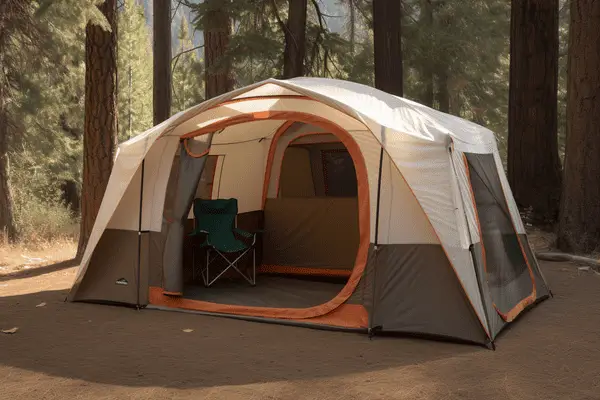
Despite their convenience, instant tents do have some limitations. They may not be as durable or stable as other tent types, due to the lightweight materials and simplified construction used to enable their quick setup. As a result, these tents may not be suitable for use in extreme weather conditions or challenging environments, where more robust shelter solutions are required. Additionally, instant tents can sometimes be difficult to fold back into their carrying cases, which can be frustrating for campers who are not familiar with the process.
Instant tents are best suited for casual camping trips, festivals, and other short-term events where convenience and speed are prioritized over durability and stability. While they may not be the right choice for every outdoor enthusiast or camping situation, their ease of use and rapid setup time make them an appealing option for many campers. As innovations in tent design and materials continue to advance, it is likely that the popularity of instant tents will continue to grow among those seeking a quick and user-friendly shelter solution.
Here is a quick table showing the advantages and disadvantages of instant tents:
| Advantages | Disadvantages |
|---|---|
| Rapid setup time | May not be as durable as other tents |
| Convenient for short trips and festivals | Less stable in extreme weather |
| Easy to use, even for novice campers | Can be difficult to fold back into carrying case |
| Ideal for families with young children | Not suitable for challenging environments |
| Minimal assembly required | Limited in terms of features and options |
| Lightweight materials | May lack adequate ventilation |
| No need for separate poles or stakes | Less suitable for long-term camping |
| Attractive for casual campers | Not ideal for backpacking or mountaineering |
Inflatable Tents
Inflatable tents offer an innovative and convenient alternative to traditional pole-based tent structures. Using air beams instead of rigid poles, these tents are designed for easy setup and a relatively lightweight carrying experience. Inflatable tents have gained popularity in recent years as campers seek new and user-friendly shelter solutions for their outdoor adventures. With their quick setup process and comfortable interiors, inflatable tents are becoming an increasingly attractive option for many outdoor enthusiasts.
One of the key advantages of inflatable tents is their ease of setup. With the help of an air pump, campers can quickly inflate the air beams to create a stable and sturdy shelter without the need for cumbersome poles or complicated assembly processes. This streamlined setup is particularly appealing to families and individuals who may be new to camping or prefer a more hassle-free experience. Additionally, the lack of rigid poles makes inflatable tents relatively lightweight, which is a plus for those who need to transport their shelter over short distances.
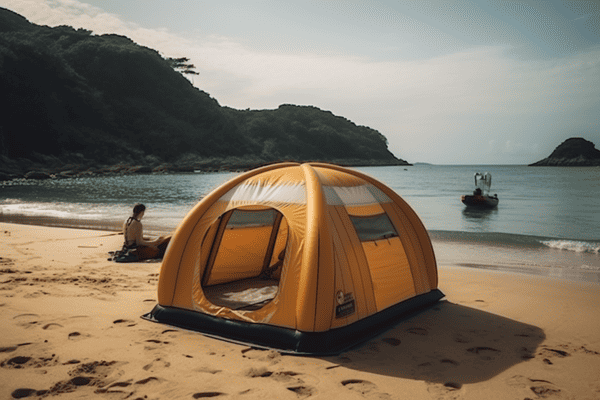
Inflatable tents also offer a high level of comfort and stability. The air beams provide a strong and supportive structure that can handle a variety of weather conditions, while the flexible nature of the air beams allows the tent to flex and absorb some of the wind’s force, making them quite stable in windy situations. The interiors of inflatable tents can be quite spacious and comfortable, with many models featuring large windows, ample headroom, and well-designed ventilation systems for optimal airflow and reduced condensation.
One question that always gets asked is: Are inflatable tents good in wind?
Inflatable tents are good in wind because they don’t have tent poles that can bend and break. This gives the tent the ability to take much stronger breezes when compared to many traditionally styled tents.
Despite their many advantages, inflatable tents do have some potential drawbacks. One notable concern is the durability of the air beams, which may not be as robust as traditional pole structures. Punctures or leaks in the air beams can lead to the tent collapsing, although many models come with repair kits to address such issues. Additionally, the reliance on an air pump for setup may be inconvenient for some campers, particularly if they do not have access to a power source or if the pump malfunctions. However, for those who appreciate the convenience and comfort of an inflatable tent, these potential drawbacks may be outweighed by the benefits they provide.
Here is a quick table showing the advantages and disadvantages of inflatable tents:
| Advantages | Disadvantages |
|---|---|
| Easy setup | Potential durability concerns |
| Relatively lightweight | Reliance on an air pump for setup |
| Stable in various weather conditions | Risk of punctures or leaks in air beams |
| Comfortable and spacious interiors | May not be as robust as traditional pole structures |
| Flexible structure absorbs wind force | Repair kits needed for potential issues |
| Suitable for families and novice campers | Possible inconvenience without power source for air pump |
| No need for cumbersome poles | Not ideal for extreme environments |
| Good ventilation and large windows | May be heavier than other lightweight options for backpacking |
Tunnel Tents
Tunnel tents are created using a series of hoop-shaped poles that create a tunnel-like structure. These tents provide ample headroom and living space, making them an attractive option for families or groups of campers. The unique design of tunnel tents not only offers generous interior space but also an aerodynamic profile, enabling them to handle windy conditions with ease.
One of the key advantages of tunnel tents is the amount of living space they provide. The tunnel-like structure creates a series of rooms with vertical walls, making it easy for occupants to move around, stand up, and store gear. This extra space makes tunnel tents an ideal option for longer camping trips, where more room is needed for sleeping, cooking, and relaxation. The roomy interiors can also accommodate larger sleeping arrangements, such as air mattresses or cots, enhancing the overall comfort of the camping experience.
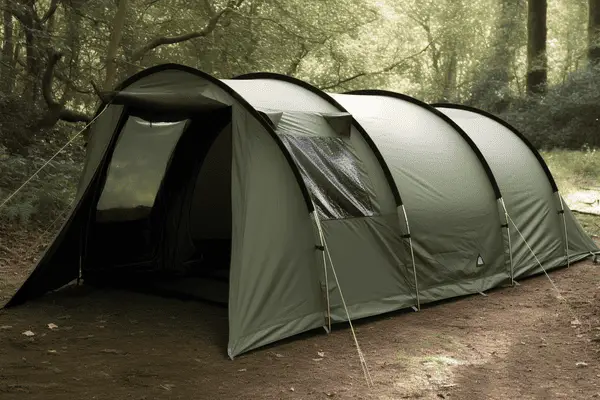
Tunnel tents are also known for their performance in windy conditions. The curved profile of the tent allows the wind to flow over and around the structure, reducing the impact of wind on the tent and increasing its stability. This aerodynamic design helps tunnel tents stay secure and stable even in challenging weather conditions, making them suitable for use in various environments. The well-ventilated design of tunnel tents also helps to reduce condensation, ensuring a comfortable and dry interior.
If you’re still having trouble with condensation, go here: https://www.carandtent.com/why-does-the-inside-of-my-tent-get-wet-and-what-to-do-about-it/
Despite their many benefits, tunnel tents do have some drawbacks. They can be more challenging to set up than other tent styles, particularly for inexperienced campers, as the poles must be inserted into the fabric sleeves and secured in place. Additionally, tunnel tents may require more extensive guying and staking to ensure proper stability, which can be time-consuming. Finally, due to their larger size and more complex structure, tunnel tents can be bulkier and heavier to transport than other tent types. Nonetheless, for campers who prioritize space, comfort, and performance in windy conditions, tunnel tents can be an excellent shelter option.
Here is a quick table showing the advantages and disadvantages of tunnel tents:
| Advantages | Disadvantages |
|---|---|
| Ample living space and headroom | More challenging setup |
| Aerodynamic design handles wind well | Requires extensive guying and staking |
| Ideal for longer camping trips | Bulkier and heavier to transport |
| Suitable for families or groups | May not be ideal for inexperienced campers |
| Accommodates larger sleeping arrangements | Time-consuming setup |
| Well-ventilated, reducing condensation | Not as lightweight as other tent types |
| Stable in various environments | Not a viable choice for backpacking |
What are your favorite types of tents? Tell us in the comments below!
